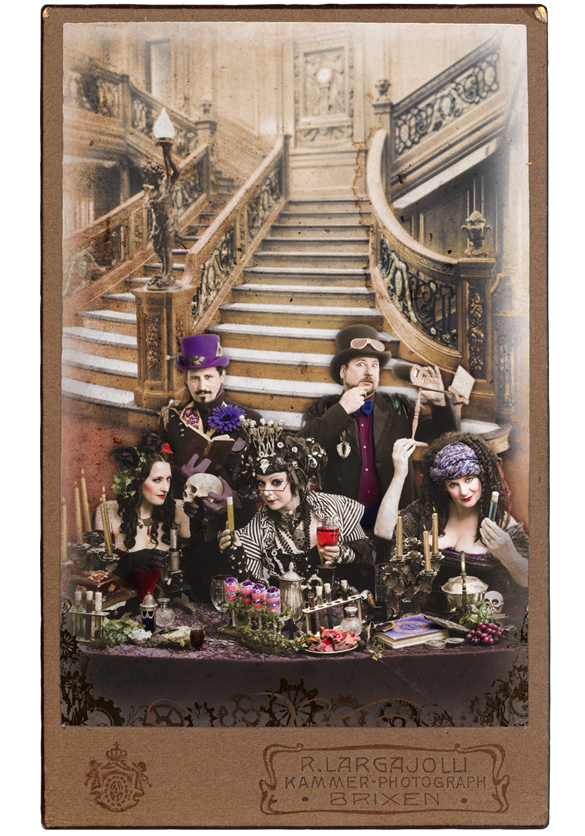

Dear Lord Byron,
Thank you so much for your introduction to Doctor Ruthven. Our balloon landed perfectly in a useful clearing, and though there were several rather large and ominous dogs roaming about, they soon ran off when our host appeared.
The Chateau is truly magnificent, with its oak panels and chandeliers everywhere, though much of it is taken over with laboratory equipment and unusual inventions of grand scale. As for our host, he really is rather splendid looking, though I’m not sure of his penchant for black leather; I can’t help but think that something cheery in green or gold might brighten the place up a little.
Tonight, he has invited a few friends for cake and conversation. They are a gloriously intellectual group. Vicomte Guittet has been talking about his chemistry experiments with little demonstrations of Scientific Principles, Mrs. Shelley read aloud from her scientific romance, and Miss Lovelace has even offered to show me her calculations one evening!
I also have a tincture for you, compliments of the Doctor, though it is a rather nasty shade of orange and smells even worse. I wouldn’t touch it if I were you. …
Love and admiration as always,
Emilly
Doctor and Violetta Ruthven request your presence at the monthly gathering of The Natural Philosophical Society.
5 p.m. sharp. Tea will be served.
There will also be a short demonstration of Phantasm Entrapment by a trio of our esteemed colleagues, an exhibition of utmost gravity.
For those who wish to partake of overnight hospitality, rooms have been prepared in the east wing. I am assured it is no longer inhabited by last month’s experiment … or two on their annual migration!
RSVP

Stripey Syringe Push Pops
Mysterious Monster Bites
Mechanical Box Cake
Volcano Toffee
Aetheric Iced Tea and Other Concoctions
Blue Cheese and Honey Sandwiches
Watercress and Peanut Butter Sandwiches
Red and White Grapes and Melon Balls

A shadowy figure in an apron and cap walks the long corridor with a covered silver tray. Shrieks echo through the empty abbey, carried on the wind through the rafters. Thumps and crashes from the attic do not disturb her. Even though it sounds as if furniture is being hurled by a being with superhuman strength, she marches stoically on toward her destination. Finally, lifting an ancient tapestry, the nurse opens a hidden door and ascends the narrow staircase. Herr Doktor waits.
A shard of light shines upon the silver tray, now set down upon the floor. The door cracks open slowly, just enough for a cold white hand to reach out and grasp the cake….
115g (4 oz.) butter
115g (4 oz.) sugar
115g (4 oz.) self-rising flour
2 eggs
Deep red/pink food coloring
55g (2 oz.) grated white chocolate
85g (3 oz.) fresh or frozen raspberries [or 30g (2 tbsp.) of whole fruit raspberry jam]
40g (11⁄2 oz.) cream
100g (31⁄2 oz.) white chocolate, roughly chopped
115g (4 oz.) butter
115g (4 oz.) icing sugar
Purple food coloring
5ml (1 tsp.) of vanilla extract
Edible stars, glitter, sequins, colored sugar or any other decoration you prefer

6 pop cases
Piping bag with star nozzle
*Makes 6 push pops
This cake and icing combination also makes delectable cupcakes. Mix up the cake batter following steps 1–3. Place 12 paper cases in a muffin tray and fill halfway, using about 3⁄4 of the cake mix. Make a little well in the center of each cake and place a teaspoon of raspberries in it, covering all the raspberries with the remaining cake mix. Bake the cupcakes for only 10–15 minutes, cool in their cases on a wire rack, then ice and decorate. When you bite into a cake the raspberries will ooze out!

To maintain the perfect presentation of the push pops, it is imperative to keep them cool. The truffle icing melts very quickly if it is allowed to become warm! They are best stored in a cool cupboard rather than a refrigerator and should be eaten within a day or two of assembling.




In the silence of Doctor Ruthven’s library at midnight, the dusty cabinets stand tall, filled with fancies from all four corners of the earth. Giant eggs of the fabled Roc; wax seals of long-dead emperors; tablets inscribed with unknowable letters—these are but a few of the many mysterious treasures that abound. Surely, if one could just unlock the secrets of an ancient scroll or two, the wonders of the universe would open, bringing enlightenment, peace and fame to the bearer of the news.
So it is that Lady Armstrong Prior sits night after night, candle wax dripping on the mahogany desk and quill in hand, desperately unraveling the codex that will divulge the secret recipe for Cleopatra’s favorite snack.
175g (6 oz.) butter
Finely grated peel of an orange
Finely grated peel of a lime
Green and orange food coloring (optional)
350g (12 oz.) flour
55g (2 oz.) ground almonds
220g (7 oz.) caster sugar
2 eggs
*Makes 12 biscuits

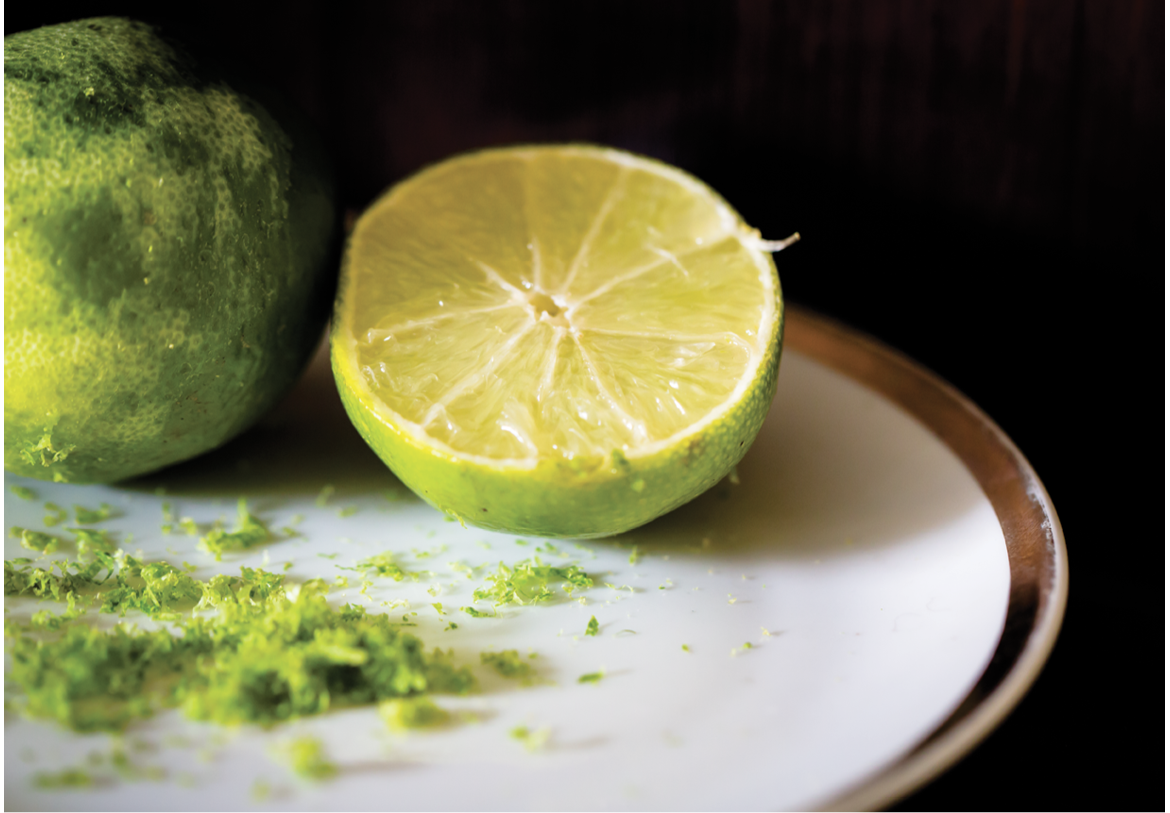
For a richer treat, try chocolate orange biscuits. All you need to do is replace the lime peel and juice with one dessert spoon of cocoa powder mixed into half of the flour mix.
For a refreshing citrus variation, try lemon lime biscuits. Simply replace the orange peel and juice with lemon peel and juice.

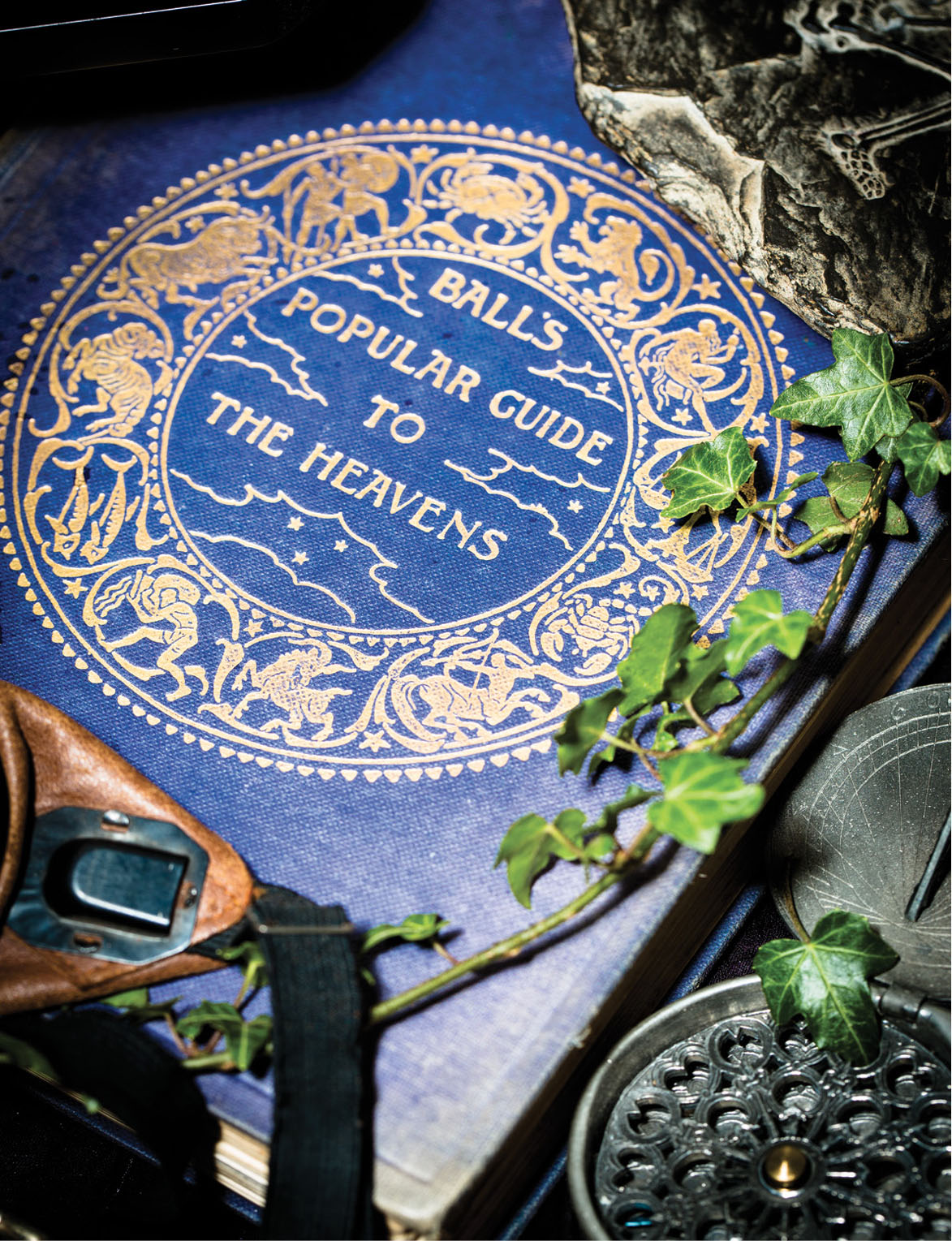
Biscuits are one of the most popular foodstuffs to take on an expedition. They don’t take up much space, and they provide plenty of carbohydrates for energy. The name comes from the Latin bis coquere meaning “cooked twice.” Adventurers and sailors noticed that biscuits softened with age, so in order to maintain crispness on long voyages, hardtack was baked up to four times.
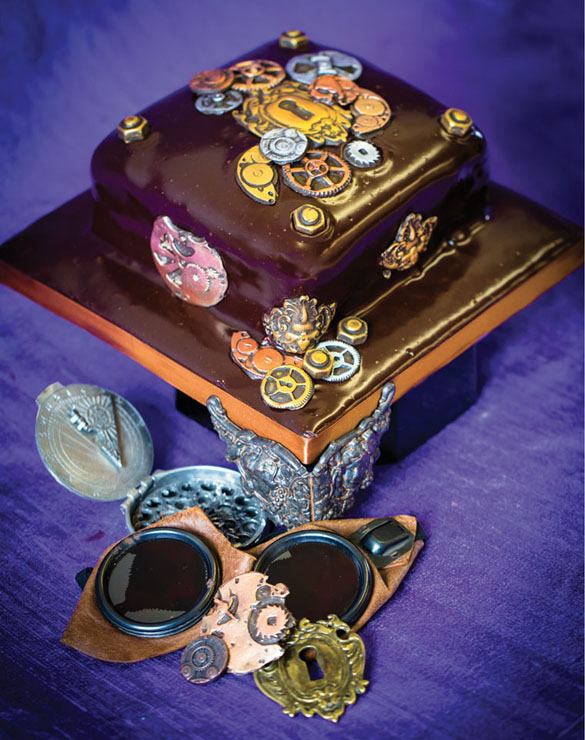
Gilded carriages drawn by dark plumed horses arrived one by one, depositing masked revelers cloaked in silk and velvet onto the moonlit steps. It is the Count Von Rottenberg’s birthday, and he has an amazing new device to demonstrate in the cellar of Dr. Ruthven’s Chateau. As guests descend into the gloomy depths, Von Rottenberg’s whirring mahogany and brass device can be seen gleaming through the darkness with a strange glow. The guests cluster around begging for a look, as he ushers them into the chamber of the machine, never again to be seen; although, the Count’s troupe of performing monkeys are now legendary across Europe.
115g (4 oz.) butter
115g (4 oz.) sugar
115g (4 oz.) self-rising flour
2 eggs
30 ml (1 fl. oz.) amaretto [or 30ml (1 fl. oz.) milk and a few drops almond essence]
30 ml (1 fl. oz.) milk
115g (4 oz.) chocolate, chopped
115g (4 oz.) butter
115g (4 oz.) sugar
2 eggs
115g (4 oz.) self-rising flour
115g (4 oz.) butter
115g (4 oz.) icing sugar
5ml (1 tsp.) vanilla extract
400g (14 oz.) ready made marzipan
20g (3⁄4 oz.) cocoa powder
100g (31⁄2 oz.) cream
200g (7 oz.) dark chocolate, chopped
Some cogs and gear wheels scrubbed clean in boiling water and dried thoroughly
2 part food-grade silicone molding putty
Brown flower petal paste and chocolate ready-to-roll icing
Edible metallic powders
Serrated bread knife








If you don’t want to use the molded cogs immediately, they can be kept in an airtight container for up to a month. They make wonderful additions to cupcakes, too.
You don’t have to use chocolate-flavored icing either; why not try lemon for lemon cupcakes or white chocolate for vanilla ones? Just use a molded base that is the same color as your main icing so it will blend in when you place them on your cakes.

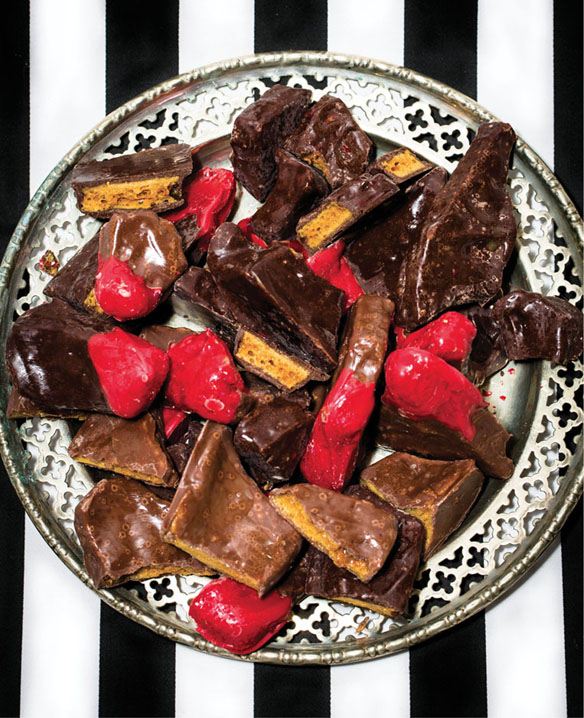
When the Society of Investigative Natural Philosophers takes it in turns to host their monthly lecture, they love to impress the other members with a showy dinner, perhaps with fireworks or a display of scientific principles afterwards. Lord Francis Rockett was feted in the society annals when he combined the two in his marvelous tabletop volcano toffee dispenser. In the darkened hall, amid a fog of dry ice, the volcano overflowed, creating rivers of edible molten lava!
Poor cook was at a total loss as what to do with all the left over toffee, and the servants ate nothing else for weeks. This is a far more sensible method and quantity….
15g (1 heaping tsp.) bicarbonate of soda (baking soda)
45ml (3 tbsp.) golden syrup (or corn syrup)
15ml (1 tbsp.) cider vinegar (or malt or white wine vinegar)
Juice of 1⁄2 lemon
75g (23⁄4 oz.) light brown sugar
75g (23⁄4 oz.) white sugar
200g (7oz.) dark chocolate for coating
100g (31⁄2 oz.) red/strawberry chocolate melt (optional)
Red edible glitter flakes (optional)

When bicarbonate of soda is added to vinegar an extraordinary chemical reaction occurs. This reaction is responsible for creating the honeycomb air pockets in the toffee. If it doesn’t fluff up, it may be because your bicarbonate is too old.
To maintain maximum fluffiness, it’s best to cool the toffee very quickly, hence the tin in the ice bath. If it goes flat and loses its honeycomb-like appearance, it was not cooled quickly enough.
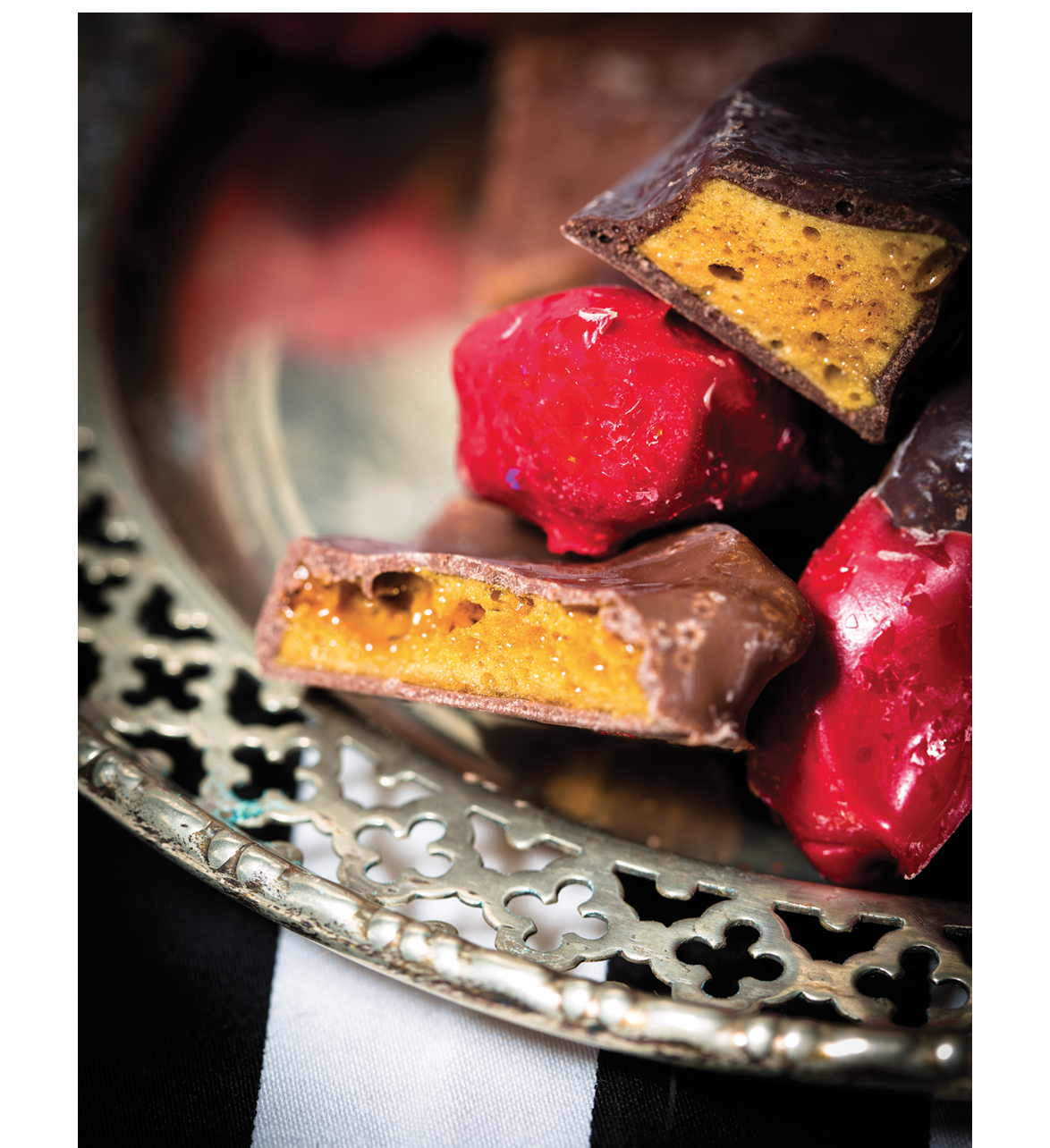

Dipping the toffee in chocolate adds flavor as well as protects it. If you don’t cover it in chocolate, it will quickly become sticky due to prolonged exposure to the air.
Try adorning your toffee with different flavors of chocolate for an extra dimensional thrill; some of Dr. Ruthven’s favorites include the following:

Deep within the laboratory something is brewing! Flasks bubble and hiss, and guests are under strict orders not to touch anything! Despite being shunned by society for his bizarre experiments, Doctor Ruthven’s laboratory is a wonderland of extraordinary potions and lotions. He has been long under the surveillance of several freelance monster hunters, whose suspicions were aroused by rumours of peculiar creatures that emerge at dead of night, running into the surrounding forests at full moon. Investigation has so far only revealed a particularly friendly puppy … that glows in the dark.
Per serving:
40ml (11⁄2 oz.) vodka
20ml (3⁄4 oz.) gin
20ml (3⁄4 oz.) light tequila
20ml (3⁄4 oz.) light rum
10ml (1⁄4 oz.) white crème de menthe
40ml (11⁄2 oz.) lemon and lime juice mixed
10ml (1⁄4 oz.) sugar syrup
Cola
Edible gold glitter


The reason this delightful drink is called a tea is all due to prohibition. In order to avoid arrest and imprisonment or heavy fines during the alcohol ban, this mixture—which is, after all, colored a little like tea—was drunk from cups and saucers to try and fool the cops. Even now, I must admit I have always had my suspicions about a few tea-drinking aunts who insist on lemon, not milk….

Per serving:
50g (13⁄4 oz.) strawberries (frozen)
30ml (1 oz.) white rum (1 UK shot)
30ml (1 oz.) fresh pineapple juice
Lime juice
Icing sugar
Every living cell has DNA in it, but sometimes it’s a bit tricky to get it out. Strawberries (or any other soft, pulpy fruit like kiwi or melon) make the job a bit easier. Freezing them destroys their cell membranes, which is why they go to mush when you defrost them. It also, quite handily, releases their DNA from the nucleus. The pineapple juice contains enzymes that break down the proteins found in the cell and cleans the DNA up; but if you leave the mixture for too long, the pineapple juice will start to destroy the DNA as well, so don’t hang about!

Per serving:
50ml (11⁄2 oz.) absinthe
100ml (31⁄2 oz.) ice cold cream soda
Louching is the term given to the magical effect of cream soda on absinthe. The particulates in the absinthe with bad solubility (anethol from anise, fennel and star anise) are released from the alcohol, creating a suspension of fine particles clouding the drink. A beautiful opal white bloom appears, spreading slowly through the glass as more cream soda is added, leading to the myth of the magical green fairy.

Per serving:
20ml (3⁄4 oz.) Kahlua
20ml (3⁄4 oz.) Galliano
10ml (1⁄4 oz.) Baileys Irish Cream
10ml (1⁄4 oz.) single (light) cream
There is a science behind creating a layered drink like the Gentleman’s Study. Every liquid has its own specific gravity. By discovering the gravity for a series of liquids, it is easy to determine which of them will sink and will need to be layered at the bottom of the glass and which will float to the top! The greater the differences in gravities, the less likely the two liquids are to mix and will instead create nice, clean layers. Chilling the alcohol thoroughly also helps with this.

Per serving:
40ml (11⁄2 oz.) gin
10ml (1⁄4 oz.) Cointreau
150ml (51⁄2 oz.) tonic water
Ice
Garnish (lemon, lime, orange, cucumber etc.)
What gives a Glow and Tonic its lovely blue hue? It’s the quinine contained in the tonic water. Quinine is manufactured from the bark of the Cinchona tree, which originates in Peru. The Cinchona tree has assorted medicinal properties, the most well known being its antimalarial powers, which were known as early as 1631. Missionaries first brought the medicine back from Peru to Europe, leading to its nickname “Jesuit’s bark.” When in mosquito-ridden warmer climes, colonial Victorians would mix the bitter medicine with gin to disguise the taste, and so the gin and tonic was born.

Per serving:
10ml (1⁄4 oz.) EIC poppy syrup
10ml (1⁄4 oz.) Fruiss Violet Syrup
15ml (1⁄2 oz.) De Kuyper Blue Curaco
15ml (1⁄2 oz.) Orchards Peach Schnapps
20ml (3⁄4 oz.) Eristoff Black Vodka
20ml (3⁄4 oz.) Absolut Raspberri vodka
When making a layered drink like the Stripey Stocking, it’s worth noting that different brands of the same spirit will sometimes have different specific gravities, so if something isn’t working, that could well be why! A great deal depends on the percentage of alcohol. As a rough rule of thumb, the higher the alcohol content, the higher it’ll be on the list.
This is a list of some of the most popular and colorful ingredients in gravity order, with the densest at the bottom of the list: